Abstract
The primary reason for concern about the adverse effects of exposure to Agent Orange is attributable to its toxic contaminant, 2,3,7,8-tetrachlorodibenzo-p-dioxin (TCDD) or dioxin. We studied adipose tissues from 36 Vietnam veterans, a similar group of 79 non-Vietnam veterans, and 80 civilians; the tissue specimens were selected from the 8,000 archived tissues collected from the non-institutionalized general population by the US Environmental Protection Agency. The geometric mean (+/- standard deviation) dioxin levels in adipose tissue for Vietnam veterans, non-Vietnam veterans, and civilian controls were 11.7 (+/- 1.7), 10.9 (+/- 1.7), and 12.4 (+/- 1.9) parts per trillion on a lipid weight basis, respectively. The mean levels for these groups were not significantly different from each other with or without adjustment for age of individuals, body mass index, and specimen collection year. In addition, none of the surrogate measures of Agent Orange exposure such as military branch, service within specific geographic region, military occupation, and troop location in relation to recorded Agent Orange spray was associated with the dioxin levels in adipose tissue of Vietnam veterans. Our results suggest that heavy exposure to Agent Orange or dioxin for most US troops was unlikely.
Full text
PDF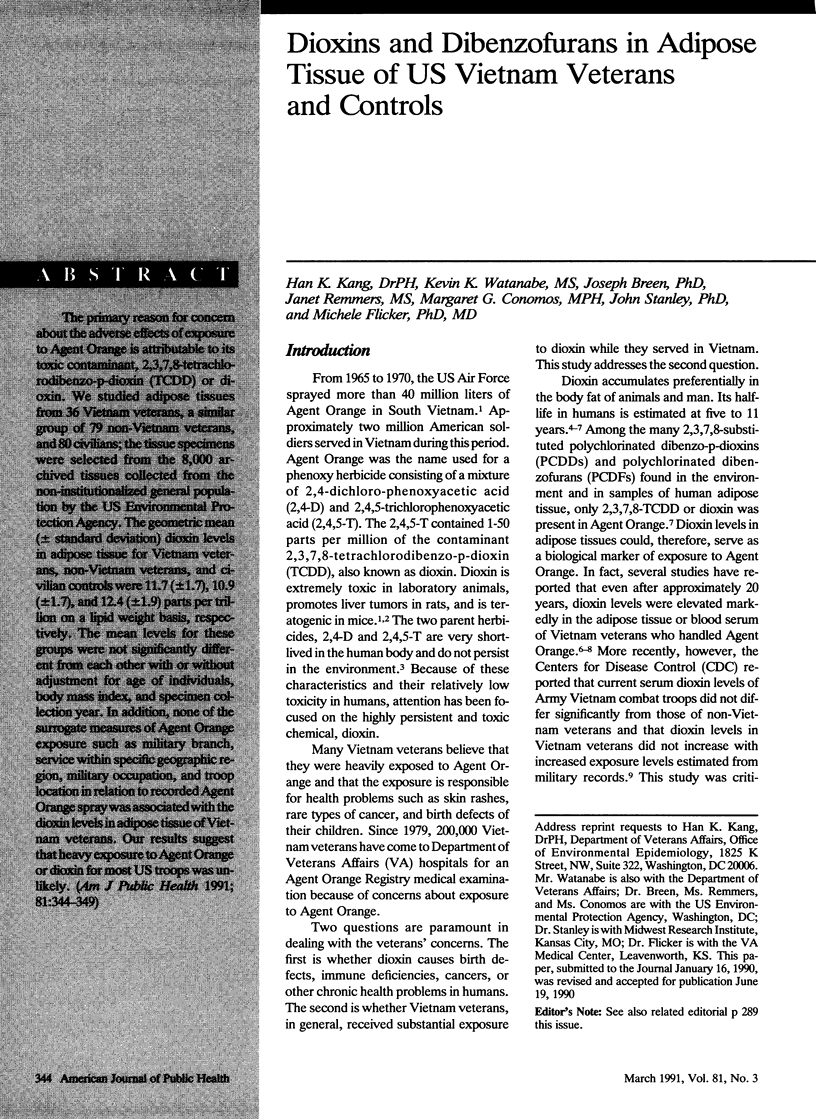
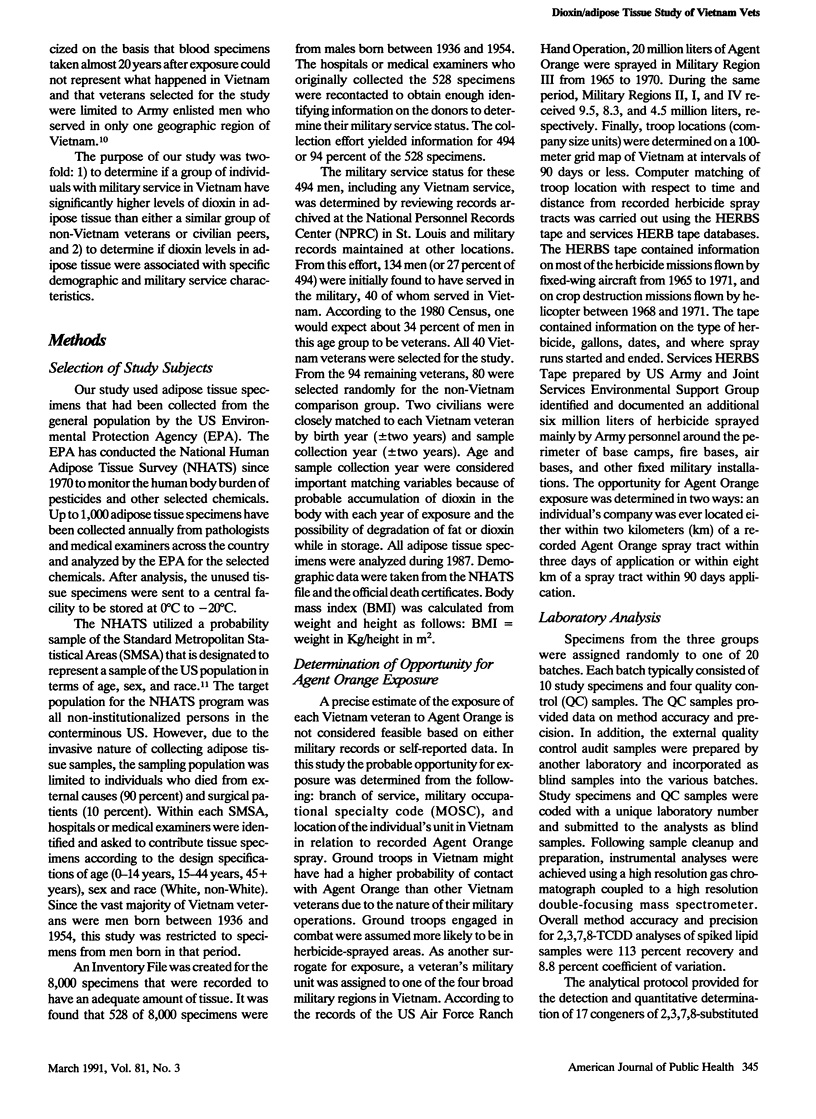
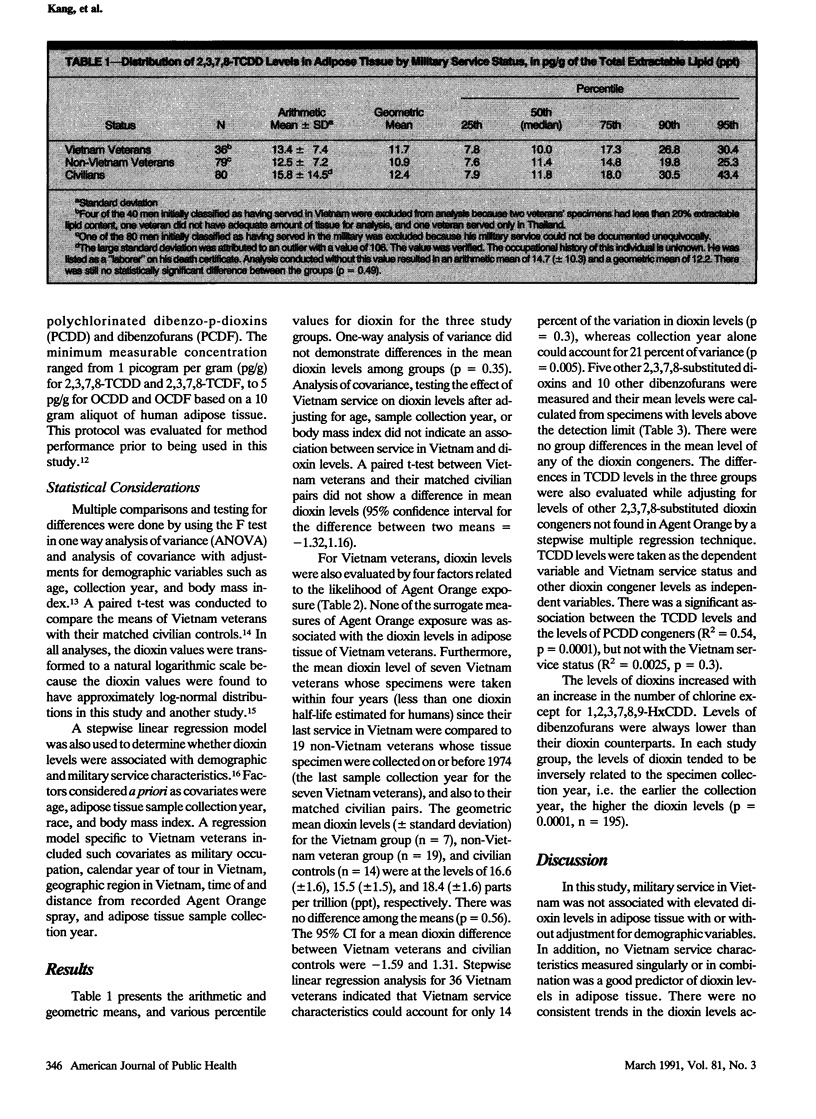
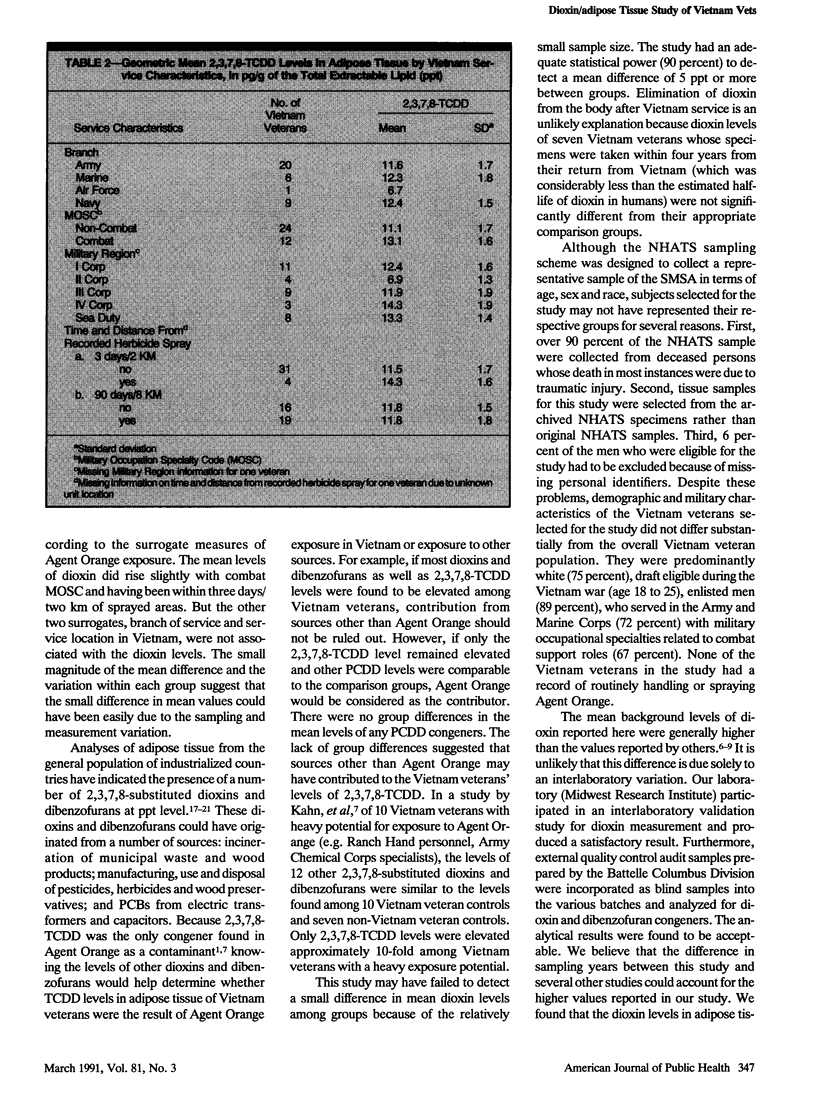
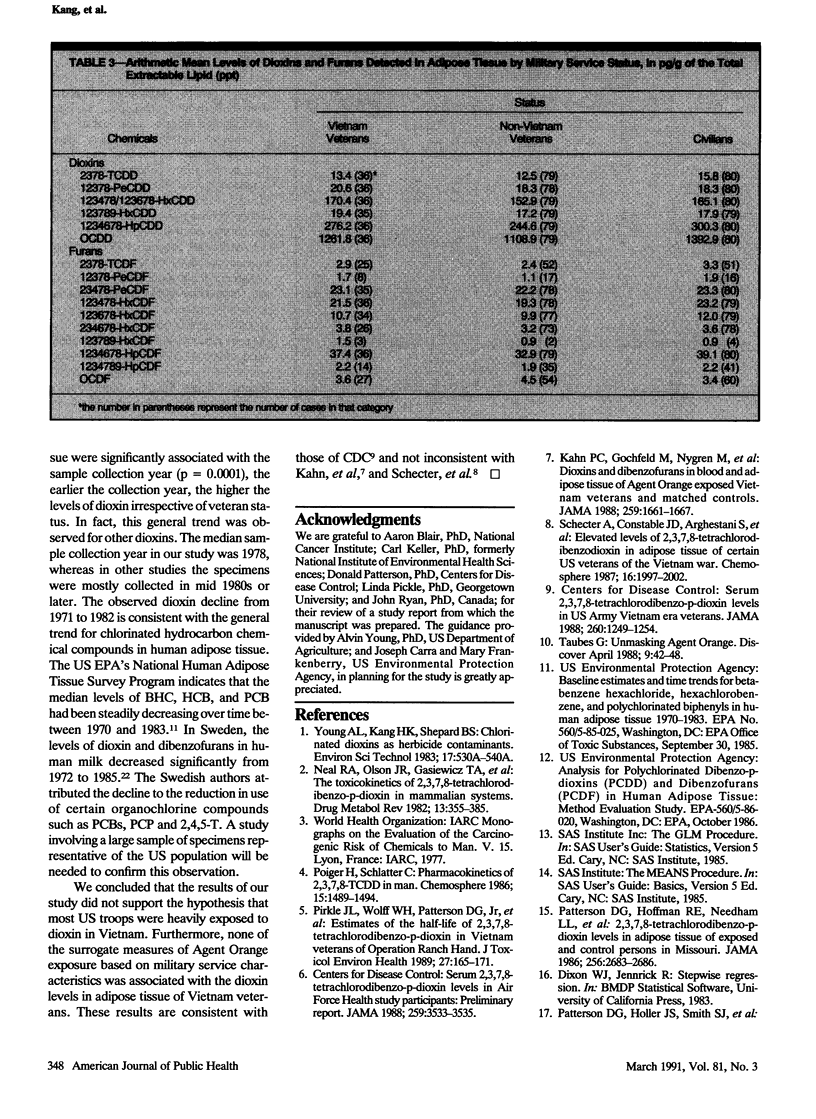
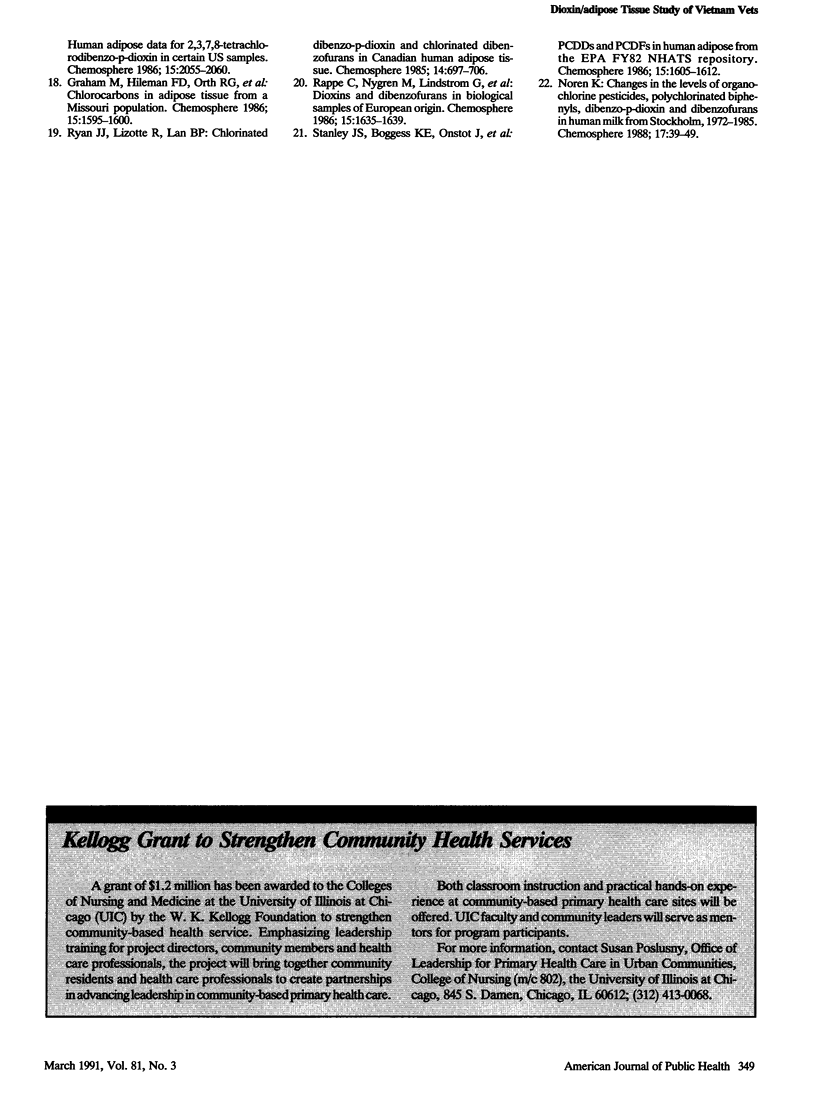
Selected References
These references are in PubMed. This may not be the complete list of references from this article.
- Kahn P. C., Gochfeld M., Nygren M., Hansson M., Rappe C., Velez H., Ghent-Guenther T., Wilson W. P. Dioxins and dibenzofurans in blood and adipose tissue of Agent Orange-exposed Vietnam veterans and matched controls. JAMA. 1988 Mar 18;259(11):1661–1667. [PubMed] [Google Scholar]
- Neal R. A., Olson J. R., Gasiewicz T. A., Geiger L. E. The toxicokinetics of 2, 3, 7, 8-tetrachlorodibenzo-p-dioxin in mammalian systems. Drug Metab Rev. 1982;13(3):355–385. doi: 10.3109/03602538209029985. [DOI] [PubMed] [Google Scholar]
- Patterson D. G., Jr, Hoffman R. E., Needham L. L., Roberts D. W., Bagby J. R., Pirkle J. L., Falk H., Sampson E. J., Houk V. N. 2,3,7,8-Tetrachlorodibenzo-p-dioxin levels in adipose tissue of exposed and control persons in Missouri. An interim report. JAMA. 1986 Nov 21;256(19):2683–2686. [PubMed] [Google Scholar]
- Pirkle J. L., Wolfe W. H., Patterson D. G., Needham L. L., Michalek J. E., Miner J. C., Peterson M. R., Phillips D. L. Estimates of the half-life of 2,3,7,8-tetrachlorodibenzo-p-dioxin in Vietnam Veterans of Operation Ranch Hand. J Toxicol Environ Health. 1989;27(2):165–171. doi: 10.1080/15287398909531288. [DOI] [PubMed] [Google Scholar]


